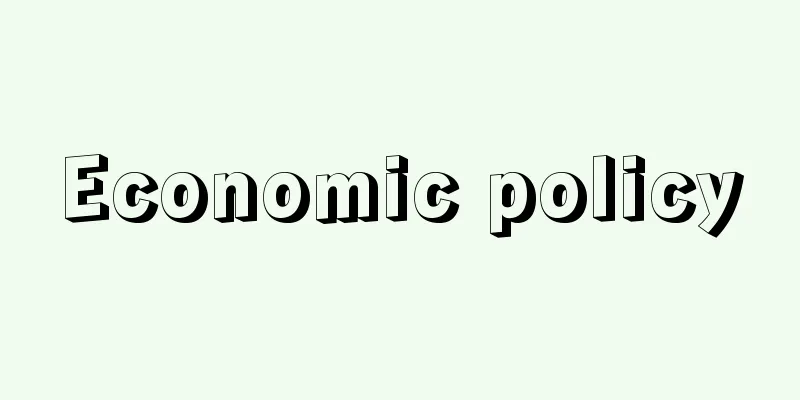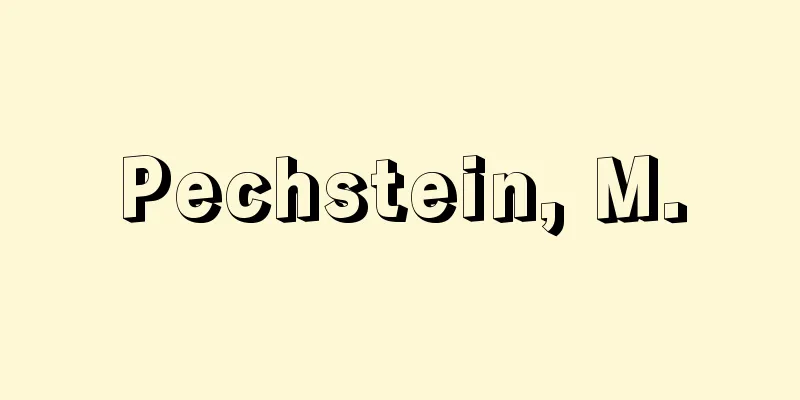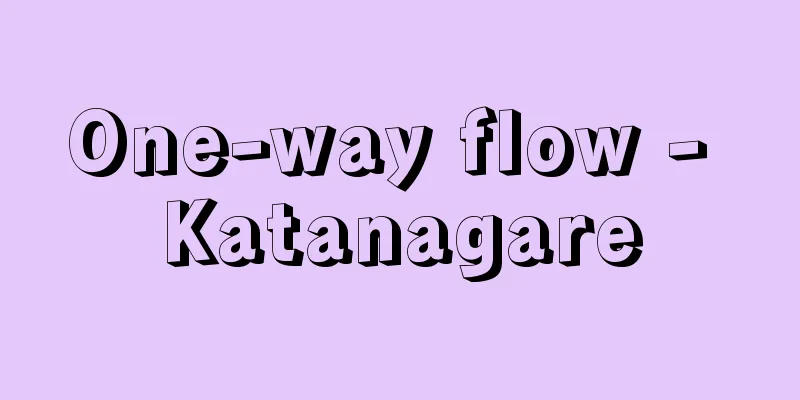Economic policy

|
Today, every country in the world is faced with the economic problem of maximizing social goals (welfare) within the constraints of the resources (natural resources, capital, and labor) and technology available in the national economy as a whole. Some countries are trying to solve these economic problems by adopting a decentralized market economy on the one hand, and a centralized planned economy on the other. Here, the distinction between decentralized and centralized is made based on whether the decision-making entity is a large number of economic entities such as households and companies, or a single entity, the government. The former tries to adjust economic problems through the price mechanism in the market, while the latter tries to do so through a government planning mechanism. Incidentally, advanced capitalist countries, including Japan, are based on a decentralized market economy, but because there are economic problems that cannot be solved by that alone, they adopt a mixed economic system in which the government intervenes and introduces elements of a centralized planned economy. This role of the government in planned economy is generally called economic policy. [Tsuguo Fujino] Economic Policy GoalsThe ultimate goal of economic policy is to maximize social welfare, but to achieve this, the following is necessary: first, to make the best use of available resources in the entire economy under a given technology, and to ensure that there are no idle resources; second, to innovate the level of technology itself and expand production possibilities; third, to make it impossible to improve the economic welfare of one economic entity (households, companies) without worsening the economic welfare (utility, production) of other economic entities; and fourth, to improve the economic welfare of the entire economy by improving the economic welfare of one economic entity even if it worsens the economic welfare of other economic entities. These four goals are generally referred to as (1) economic stability (full employment, price stability, equilibrium in the balance of payments), (2) economic growth, (3) efficient allocation of resources, and (4) fair distribution of income. If the achievement of one of these policy goals allows the achievement of the other at the same time, the two goals are said to be complementary. Conversely, if the achievement of one goal makes the achievement of the other difficult, they are said to be substitutes or in a trade-off relationship. If the two goals are unrelated to each other, they are said to be independent. [Tsuguo Fujino] Economic Policy Goals and Market MechanismsDecentralized market mechanisms utilize the parameter or automatic adjustment function of prices. In other words, companies and households act rationally based on the price information they are given, and determine optimal consumption (demand) or optimal production (supply) to meet their respective objectives (profit maximization, utility maximization). When these supply and demand plans are aggregated socially, if supply and demand are not balanced, the price itself changes flexibly according to the supply and demand gap, and market equilibrium is achieved by adjusting the two. As a result, each economic entity maximizes its own satisfaction through spontaneous, mutual exchange in the market. In this way, decentralized market mechanisms can achieve one of the goals of economic policy, the efficient allocation of resources, through the price mechanism under certain conditions. However, when it comes to other policy goals, such as the fair distribution of income and economic stability and growth, market mechanisms do not necessarily function well. Furthermore, even when market mechanisms are able to achieve the efficient allocation of resources, certain conditions are necessary, and government intervention is necessary when market mechanisms are imperfect and dysfunctional, or when resource allocation activities fall outside the scope of market mechanisms due to their inherent defects. Examples of the former include monopolies and oligopolies with price control power, and examples of the latter include industries with diminishing costs, external effects, public goods, uncertainty, and dynamic resource allocation. [Tsuguo Fujino] Economic policy toolsSpecific means for achieving economic policy objectives include fiscal policy (taxes, public expenditure, fiscal surplus, etc.), monetary policy (open market operations, official discount rate policy, statutory reserve ratio manipulation, etc.), foreign exchange policy, direct control, institutional change, etc. These economic policy means can be divided into quantitative and qualitative means, indirect and direct means, long-term and short-term means, and automatic and discretionary means. [Tsuguo Fujino] Relationship between policy goals and measuresIn order to simultaneously achieve multiple policy objectives, if these objectives are mutually independent, there must be at least the same number of independent measures (Tinbergen's theorem). Furthermore, when information is incomplete and policy measures must be implemented by trial and error, policy measures must be selected based on the principle of comparative advantage, taking into account their effectiveness for each objective (Mundell's theorem). For example, if there are two policy objectives, at least two policy measures are necessary (policy mix). Furthermore, even if the two policy measures can both achieve both objectives, the more effective measure should be allocated to each objective. [Tsuguo Fujino] "Theory of Economic Policy" by Tate Ryuichiro and Komiya Ryutaro (1964, Keiso Shobo)" ▽ "Modern Economics 2: Applied Economics" edited by Kumagai Naoo and Oishi Yasuhiko (1970, Yuhikaku)" ▽ "Price Theory II" by Imai Kenichi et al. (1971, Iwanami Shoten)" ▽ "Macroeconomics" by R. Dornbusch and S. Fisher, translated by Sakamoto Ichiro et al. (1981, McGraw-Hill Kogakusha)" ▽ "Principles of Economic Policy" by Kumagai Naoo (1992, Iwanami Shoten) [References] | | | | |Source: Shogakukan Encyclopedia Nipponica About Encyclopedia Nipponica Information | Legend |
|
今日、世界各国とも、一国経済全体で利用可能な資源(天然資源、資本および労働)と技術の制約のもとで、社会的目標(厚生)を最大にしなければならないという経済問題に直面している。このような経済問題に対して、一方で分権的市場経済をとり、他方で集権的計画経済体制を採用することによって解決を図ろうとしている。ここで、分権的、集権的というのは、意思決定を行う主体が家計や企業という多数の経済主体であるか、政府という単一の主体であるかによる区別である。そして、前者が、市場における価格機構を通じて経済問題を調整しようとするのに対して、後者は、政府による計画機構を通じて行おうとするものである。ところで、日本をはじめ先進資本主義国は、分権的市場経済を基本としつつも、それだけでは解決できない経済問題があるため、それに政府が介入して集権的計画経済的要素を導入するという混合経済体制をとっている。この政府の計画経済的役割を一般に経済政策という。 [藤野次雄] 経済政策の目標経済政策の究極的目標は、社会的厚生を最大にすることであるが、これを実現するためには次のことが必要である。第一に、経済全体の利用可能な資源を所定の技術のもとで最大限利用し、遊休資源が存在しないこと、第二に、技術水準自体を革新して、生産可能性を拡大すること、第三に、他の経済主体(家計、企業)の経済厚生(効用、生産)を悪化させずに、ある経済主体の経済厚生をもはや改善できないようにすること、第四に、他の経済主体の経済厚生を悪化させても、ある経済主体の経済厚生を改善させることによって経済全体の経済厚生を改善すること、である。これら四つの目標は、一般に、(1)経済安定(完全雇用、物価安定、国際収支の均衡)、(2)経済成長、(3)資源の効率的配分、および(4)所得の公平分配、といわれている。 これらの政策目標について、一方の目標を達成しようとすれば他方の目標も同時に達成できるという場合には、二つの目標は相互に補完的であるという。逆に、一方の目標を達成しようとすれば他方の目標達成が困難になる場合には、相互に代替的ないしトレード・オフ関係にあるという。二つの目標が相互に無関係な場合には、独立的であるという。 [藤野次雄] 経済政策の目標と市場機構分権的市場機構では、価格のパラメーター機能ないし自動調整機能を活用している。つまり、企業および家計は、与えられた価格情報に基づいて合理的に行動し、それぞれの行動目的(利潤最大化、効用最大化)に適合するように最適消費(需要)あるいは最適生産(供給)を決定する。これら需給計画を社会的に集計したとき、需給がバランスしない場合には、価格自体が需給ギャップに応じて伸縮的に変化し、両者を調整することによって市場均衡を達成する。その結果、各経済主体は、市場での自発的、相互的交換により自らの満足の最大化を達成する。 このように分権的市場機構は、一定の条件のもとでは価格機構により経済政策の目標の一つである資源の効率的配分を達成することができる。しかし、他の政策目標、すなわち所得の公平分配および経済安定、経済成長に関しては、市場機構はかならずしもうまく機能しない。また、市場機構は、資源の効率的配分を達成する場合でも一定の条件が必要であり、市場機構が不完全で機能障害をもつ場合や、市場機構の内在的欠陥のためにその範囲外に属する資源配分活動の場合には、政府の介入が必要となる。前者の例として、価格支配力をもつ独占や寡占など、後者の例として、費用逓減(ていげん)産業、外部効果、公共財および不確実性や動学的資源配分などがあげられる。 [藤野次雄] 経済政策の手段経済政策の目的を達成する手段としては、具体的には、財政政策(租税、公共支出、財政余剰など)、金融政策(公開市場操作、公定歩合政策、法定準備率操作など)、外国為替(かわせ)政策、直接統制、制度変更などがあげられる。これら経済政策の手段は、量的手段と質的手段、間接的手段と直接的手段、長期的手段と短期的手段、および自動的手段と裁量的手段に分けられる。 [藤野次雄] 政策目標と手段の関係複数の政策目標を同時に達成するためには、これら政策目標が相互に独立的な場合は、少なくとも同数の独立した手段がなければならない(ティンバーゲンの定理)。さらに、情報が不完全で試行錯誤的に政策手段を実行せざるをえない場合には、政策手段の選択にあってはそれぞれの目標に対する有効性を考慮した比較優位の原則に従って割り当てなければならない(マンデルの定理)。たとえば、政策目標が二つある場合には、少なくとも二つの政策手段が必要である(ポリシー・ミックス)。また、たとえその二つの政策手段が、ともにそれぞれどちらの目標をも達成できるものであるとしても、それぞれの目標に対して、より効果の大きいほうの手段を割り当てるべきである。 [藤野次雄] 『館龍一郎・小宮隆太郎著『経済政策の理論』(1964・勁草書房)』▽『熊谷尚夫・大石泰彦編『近代経済学2 応用経済学』(1970・有斐閣)』▽『今井賢一他著『価格理論Ⅱ』(1971・岩波書店)』▽『R・ドーンブッシュ、S・フィッシャー著、坂本市郎他訳『マクロ経済学』(1981・マグロウヒル好学社)』▽『熊谷尚夫著『経済政策原理』(1992・岩波書店)』 [参照項目] | | | | |出典 小学館 日本大百科全書(ニッポニカ)日本大百科全書(ニッポニカ)について 情報 | 凡例 |
Recommend
Irogoshi - A sex master
〘 noun 〙① In Kabuki, an actor who specializes in r...
Monroe, James
Born April 28, 1758 in Westmoreland, Virginia [Die...
Tamura Nariyoshi
1851-1920 A showman from the Meiji to Taisho era....
Suspended business - business suspension
〘 noun 〙 An administrative measure to suspend the ...
Colophony
Colophonium is a colorless or brownish-brown resi...
Tomb of Wang Guang - Wang Guang-myo
A tomb located in Jeongbaek-dong, Lelang District,...
Exchange - Aikae
…According to research by Niida Sho, the ancient ...
Milling cutter
A cutting tool, a rotating tool with many cutting ...
Okamebunbuku - Okamebunbuku (English spelling) sea-potato
A marine animal belonging to the phylum Echinoder...
Asai clan - Asaiuji
A sengoku daimyo in the northern half of Omi Prov...
Ume no Yoshibei Mono - Ume no Yoshibei Mono
It is a type of Kabuki Kyogen and Ningyo Joruri. I...
Owings, N. - Owings
...known for designing large commercial buildings...
Baumé degree - Baumé degree
A unit of specific gravity used to mark evenly sp...
Paignton
…Located on the south coast of the Cornish penins...
Iwamatsu River
…The town borders Kochi Prefecture to the east. I...









